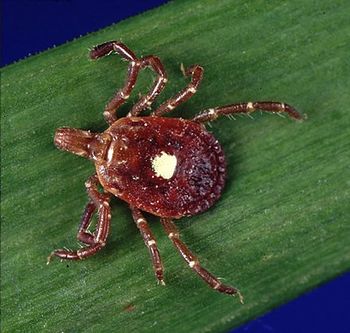
HIV and Kenyan Orphans: Those in Institutional Care May Fare Best
Parentless youth living on the streets had the highest rates of HIV and death, but extended-family living situations were not necessarily better than institutional care.
With sub-Saharan Africa’s
The
More than 85% of those in an institutional setting had lost both parents, as had 78% of those on the streets—a significantly higher percentage than the 39.6% of children in family-based settings who were double orphaned.
When first recruited into the study, 77 children were HIV positive. This included 53 children in institutional care (4.3%), 23 children in family care (1.9%), and 1 child in a street setting (1.1%). During the course of the study, 31 children, or 1.2% of the total, became infected with HIV, and 28 (1.1%) died. Expressed in terms of cases of HIV per person-years, there were 2.2 cases per 1000 person-years (95% confidence interval, 0.5-3.8 cases per 1000 person-years) for those in institutional settings, 1.2 cases per 1000 person-years (95% confidence interval, 0.2-2.1 cases per 1,000 person-years) for children in family-based settings, and 15.5 cases per 1,000 person-years (95% confidence interval, 3.1-27.1 cases per 1000 person-years) for youths living on the streets.
The death rate was 0.3 per 1000 person-years (95% confidence interval, 0-0.9 deaths per 1000 person-years) for children in institutional settings, 2.2 deaths per 1000 person-years (95% confidence interval, 0.9-3.5 deaths per 1,000 person-years) for those in family settings, and 8.6 deaths per 1000 person-years (95% confidence interval, 0-17.9 deaths per 1000 person-years) for children living on the streets.
Children living on the streets also became infected and/or died more quickly than their peers being cared for in institutions or family settings, with the time until infection with HIV or death expressed as 3.0 cases or deaths per 1,000 person-years (95% confidence interval, 1.1-4.9 cases or deaths per 1000 person-years) in institutional settings, 3.4 cases or deaths per 1000 person-years (95% confidence interval, 1.8-5.0 cases or deaths per 1000 person-years) in family settings, and 25.7 cases or deaths per 1000 person-years (95% confidence interval, 10.1-40.1 cases or deaths per 1000 person-years) for children on the streets.
Although an earlier meta-analysis of studies of orphaned children and HIV/death status indicated worse outcomes for children in institutional care versus family-based care, this was not the case in the current study. According to Braitstein, 1 reason is the studies in the meta-analysis took place in Eastern Europe and focused on government-run orphanages notorious for poor treatment of children. The findings of the current study were, however, consistent with those of other studies that took place in sub-Saharan Africa, which found that deep poverty, family strife, and abuse in the home mean family-based settings may have inherent vulnerabilities compared with institutional ones.
“Although all the institutions in our study have their own financial struggles, on average they are better resourced materially than most of the family-based settings,” Braitstein said. “Clearly, having things like a blanket, enough food, and consistent and predictable education (i.e., payment of fees and related costs) enhances the well-being of children when measured in physical ways, like nutritional status, for example.”
The institutions also may keep children under closer watch than extended families do, meaning children in these facilities may be less likely to engage in sex for money or goods such as clothes and phones, or to endure the rapes and forced sexual partnerships common in street life. Institutional settings may offer “art classes, sports, and other structured activities, the opportunity to volunteer in a church or civic context, and better family/social/peer support,” Braitstein said. “We have found that many of the institutions in the study try hard to create a family atmosphere, where they are organized into households headed by a house mother and, usually, a father, plus their biological children. The whole ‘family,’ including all the orphaned children, eat together, pray together, and so on.” The mental health of orphans in institutions also may be superior to those in home settings due to the availability of social workers and other counselors trained to deal with trauma.
The study’s strengths include the incorporation of a small but significant cohort of children living on the streets as well as a follow-up period of almost a decade. Its limitations are a lack of long-term outcomes for all cohorts and a shorter follow-up period for children living in institutional settings, probably because Kenyan law means all children leave these settings by age 18.
Braitstein noted that
Newsletter
Stay ahead of emerging infectious disease threats with expert insights and breaking research. Subscribe now to get updates delivered straight to your inbox.


























































































































































































































































































